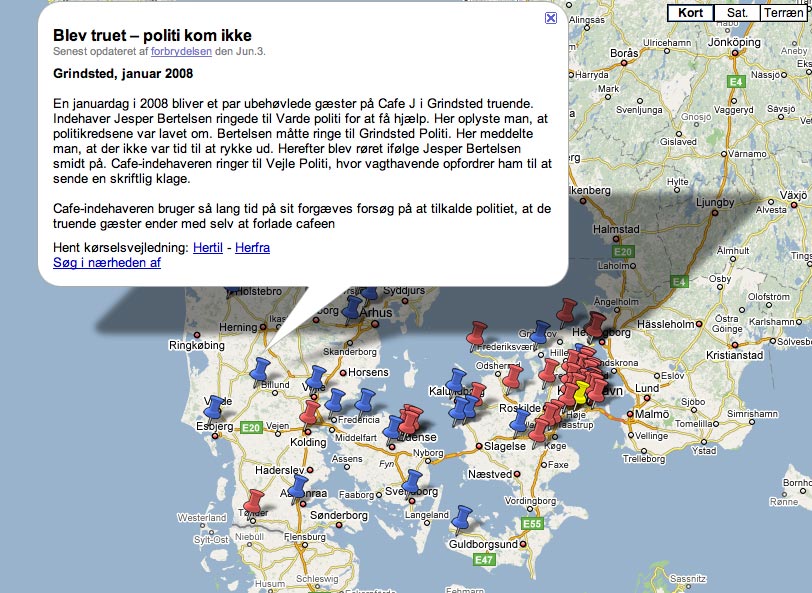
Once so controversial as the boss of The Mirror, over the last few years David Montgomery has reinvented himself as a European media mogul.
As head of the pan-European media company Mecom, Montgomery has emerged as an internet evangelist and one of the most optimistic advocates of a multimedia future.
This is good news for Lisbeth Knudsen, CEO and editor-in-chief of Mecom’s worst performing subsidiary.
Denmark’s Berlingske Media is the biggest publisher of daily newspapers in one of Europe’s toughest newspaper markets. Revenues of paid for dailies in Denmark have been ravaged by a costly two-year-long freesheet war.
When Montgomery bought the Danish company in 2006, it had a paltry 3.5 per cent profit margin – miles away from the 15 – 20 per cent Montgomery was promising his investors.
But it’s all grist to the mill for Knudsen, who rumour has it secured her job last spring by submitting the longest list of potential cost cuts.
Montgomery’s toughest general has been charged with justifying his professed faith in the profits to be made from the new media world.
“It is my task to deliver what I have promised, but also to tell Berlingske’s journalists that we have exciting times ahead of us. It is necessary for our survival that we start using new work processes, develop our journalism and launch new digital products. Old traditions are no longer enough,” Knudsen told Journalism.co.uk
Her first act as head of Berlingske was to publicly denounce Mecom’s profit demands as unrealistic.
Simultaneously, she made it crystal clear that the financial situation required radical changes, skilfully lowering the expectations of both her boss and the unions.
Integrate everything
Central to those changes is integration. Not only converging media platforms, but also altering most of the company’s titles into ‘verticals’ that deliver copy across platforms and titles be they broadsheet, tabloid or regional newspapers.
Berlingske may have created one of the most integrated media operations in Europe, but it has also caused great concern among the company’s journalists about work flow, work culture and how it may erode the different media brands.
“Everyone has to be able to work and plan to all media platforms. Journalists get more resources to cover events in this way. Instead of sending three journalists from three different platforms or titles, we will now have one journalist cover the results of a football match, one live blogging it, and one writing the portrait of the game’s top scorer,” said Knudsen.
To ensure editorial standards, she added, each title will have a brand manager to makes sure it runs only content that is appropriate and in line with its specific values.
Discontent
These assurances have not been enough, however, to assure the domestic journalists union. It has voiced continuous concern about merging titles, job cuts and the new ‘integrated’ work environment where journalists are confined to hot desks to create a paperless environment.
Knudsen says that new technology is necessary. Adding that the increase in the number of tools at the disposal of her reporters has also created many exciting new opportunities for journalists.
“This integration is necessary to survive. Journalists today have to accept that they have to fight for every pair of eyeballs. I accepted this job because I believe, both as a journalist and as CEO, we can create something great in this company,” she said.
Not here to please
As for her proprietor, she said: “It is my impression that you can have a discussion. If I am to be in charge of this, I have to believe in it. I have made it very clear that I’m not here to please. I have a very open and direct dialogue with the management about our goals and progress. During my thirty-something years in the newspaper industry I’ve encountered a lot of unprofessional owners. Mecom is a very professional owner, the company imposes certain demands to our revenues, but that is the way it has to be.”
David Montgomery may have got himself a straight shooter, but what impression is she likely to have made on her newsroom staff? It seems she is a journalististic champion who is both admired and feared.
“If anyone can stand up to Montgomery it is she. She is completely ruthless and resembles Montgomery in many ways. I cannot think of anyone in Danish media who dares to pick a fight with her,” said a journalist who has worked with Knudsen but did not wish to be named.
“But her journalistic integrity is above reproach. She is a journalistic champion.”

